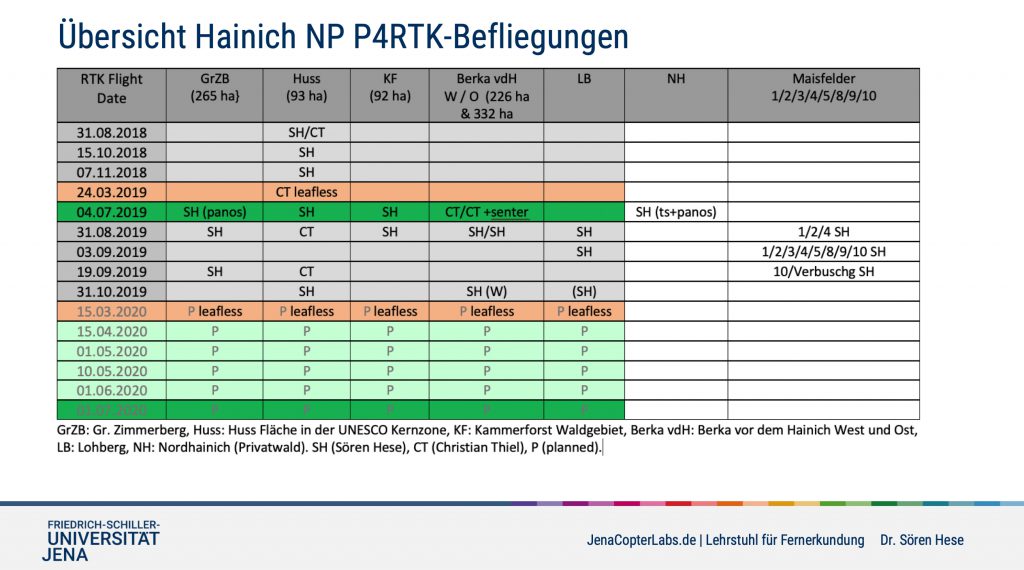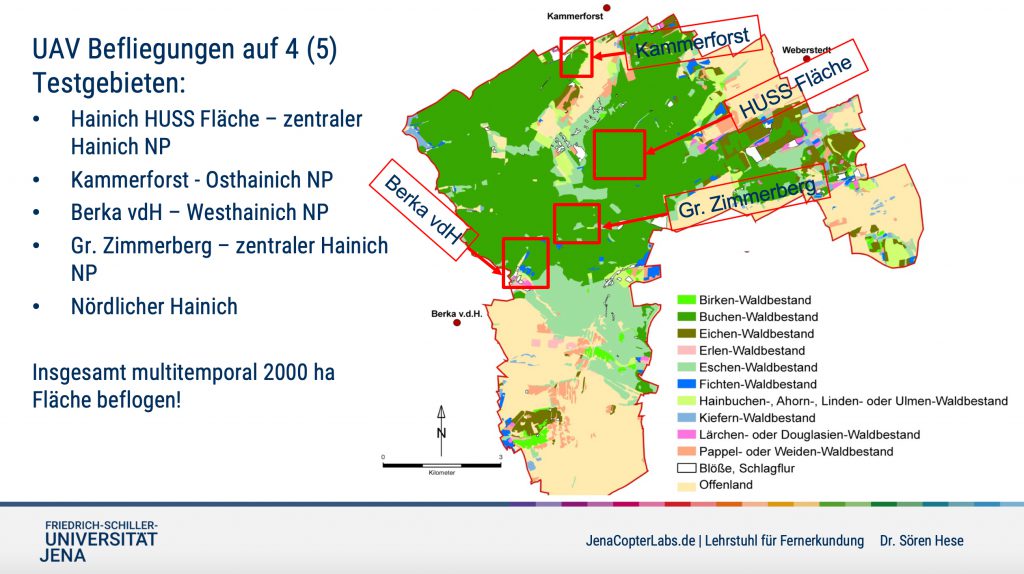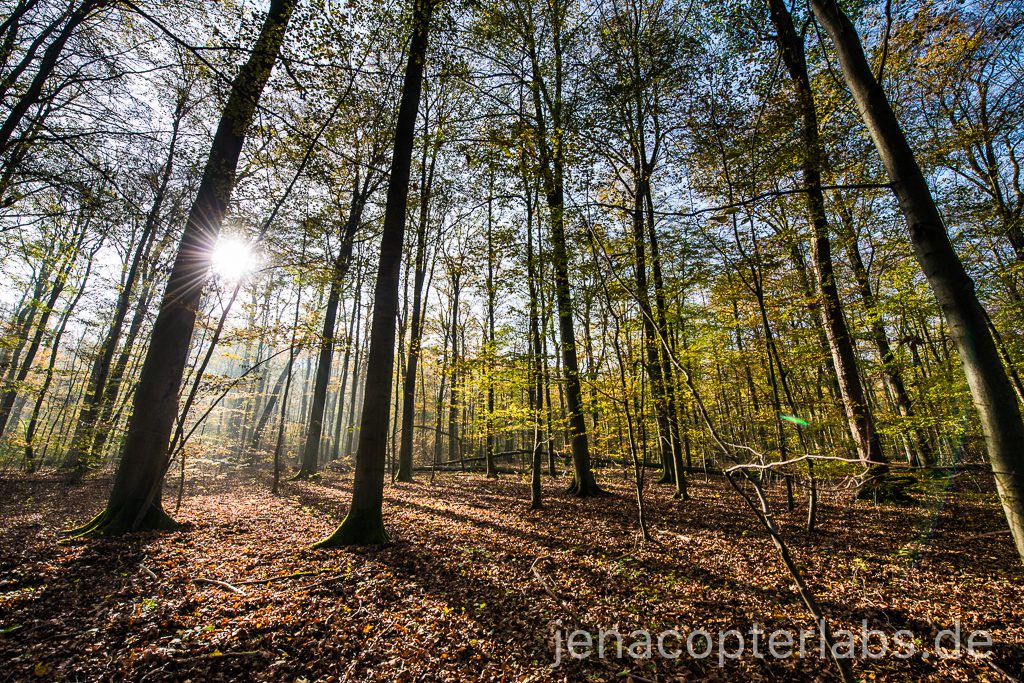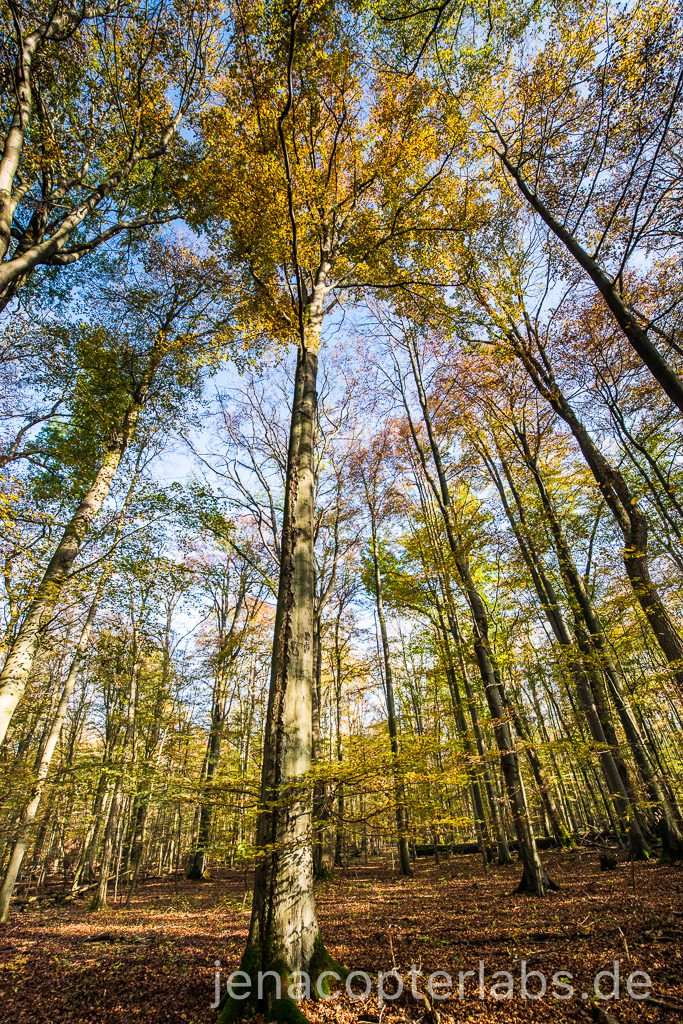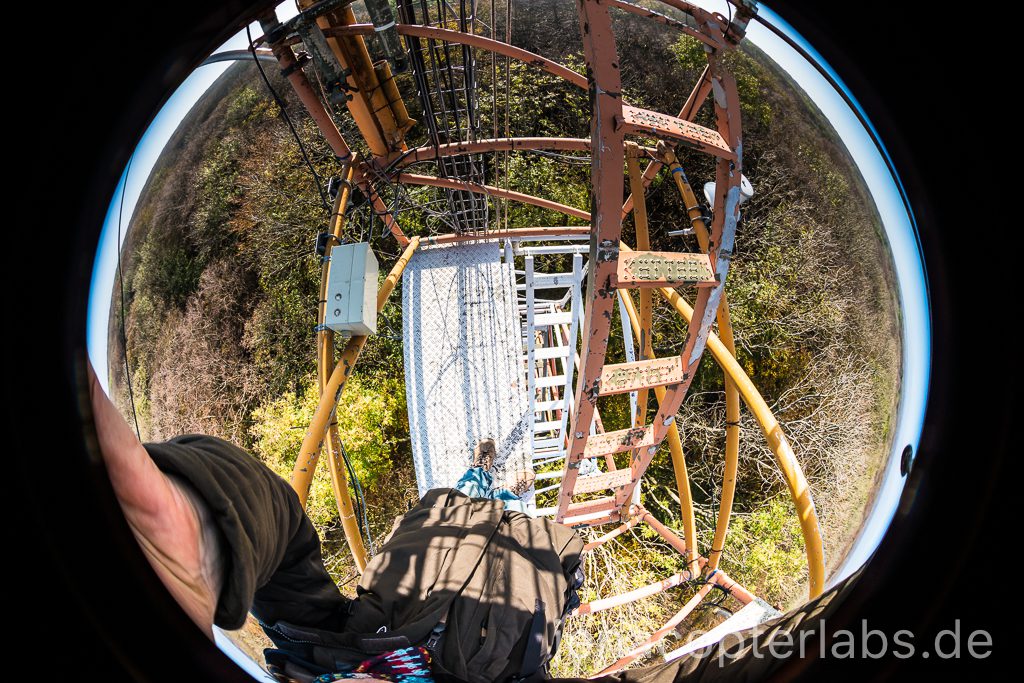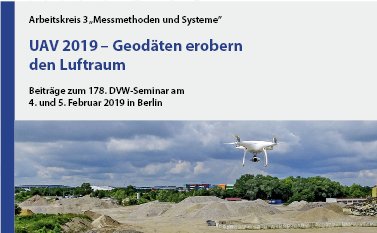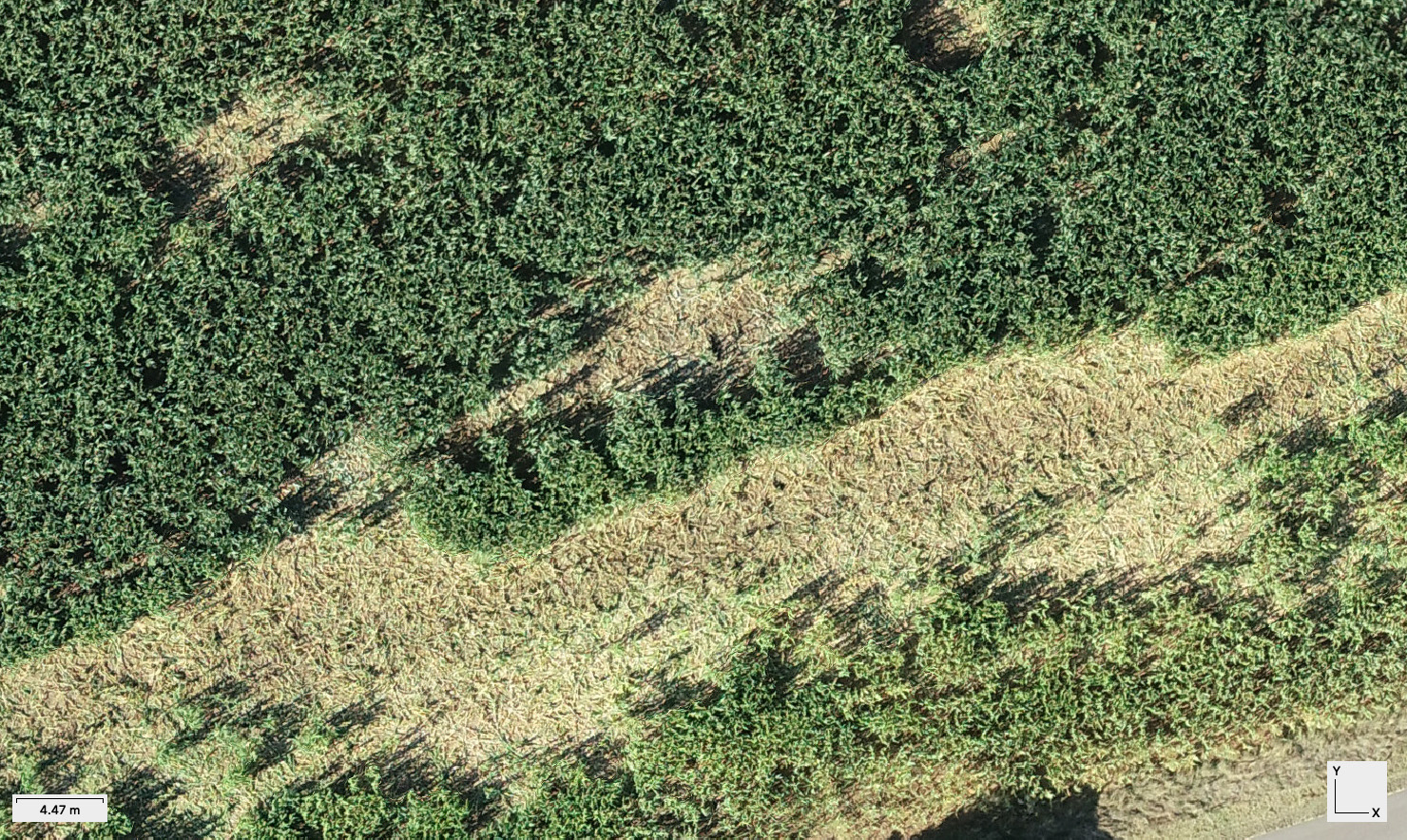Late October ’19 Flight Campaign in the Hainich NP
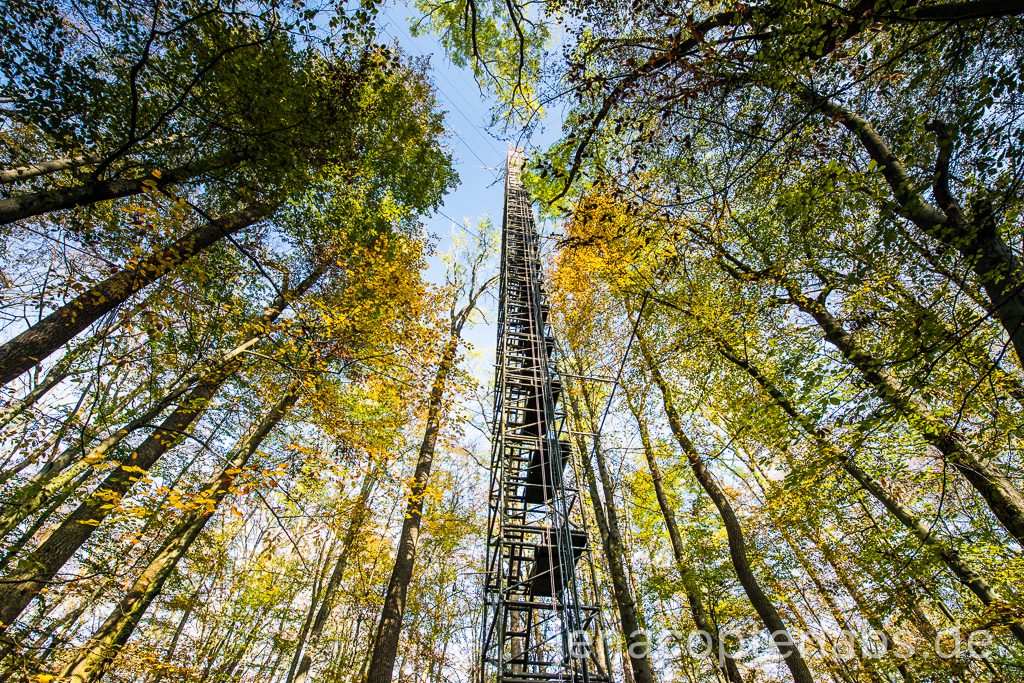
Cold air and short illumination time frame – thats what dominated the flight campaign at the 31st of October 2019 in the Hainich National Park. Originally flights on all test sites were planned but this was hardly possible in this short time frame without enough light. So I covered the Huss area and the West Berka vdH site. Flying under below 8 degrees °C from the flux tower turned out to be a very very cold experience. There was also a problem with the custom stick mode of the P4R appearing and it took some time to get this sorted out – not so nice in 40m height on an atmospheric gas measurement tower (I have a P4R support case open with DJI to sort this out, the custom stick mode will not save on exit. In fact it always resets to a totally useless stick mode config. Finally I switched to stick mode 3 since this is the closest to my usual stick mode, update: DJI confirms this as a firmware bug – it will be corrected with the next firmware update for the P4R – hopefully soon). Overall some other interesting observations: this year defoliation was much quicker than last year in the Hainich National Park area. We also had some very cold days in October but overall the coloring of the deciduous beech forests started earlier (and November last year was much warmer ;)).
The flight times per battery are clearly reduced with these air temperatures. It took two batteries to get the HUSS area covered with the P4R from 100m altitude, but this was also due to the higher than normal overlap for this flight (80/80) that I dialed in in order to compensate for the defoliated status of some trees. Image alignment and SfM processing is much easier with defoliated stands when image overlap is above 80%.
Main reason for this late Oct flight campaign was to map some tree species that can be differentiated from the beech trees by later foliage coloring. This is important for the tree species reference data definition that we need for classification of the full area CIR airborne ortho mosaics for beech mortality mapping in 2019. Ash trees and maple trees show yellowish to green leave colors while the beech is mainly fully defoliated now. Only few of the understorey beech trees still show golden-brownish coloring.
mtk – first results of the species discrimination from multiseasonal RTK data sets will be shown on the DLR meeting in November 2019 in Cologne.
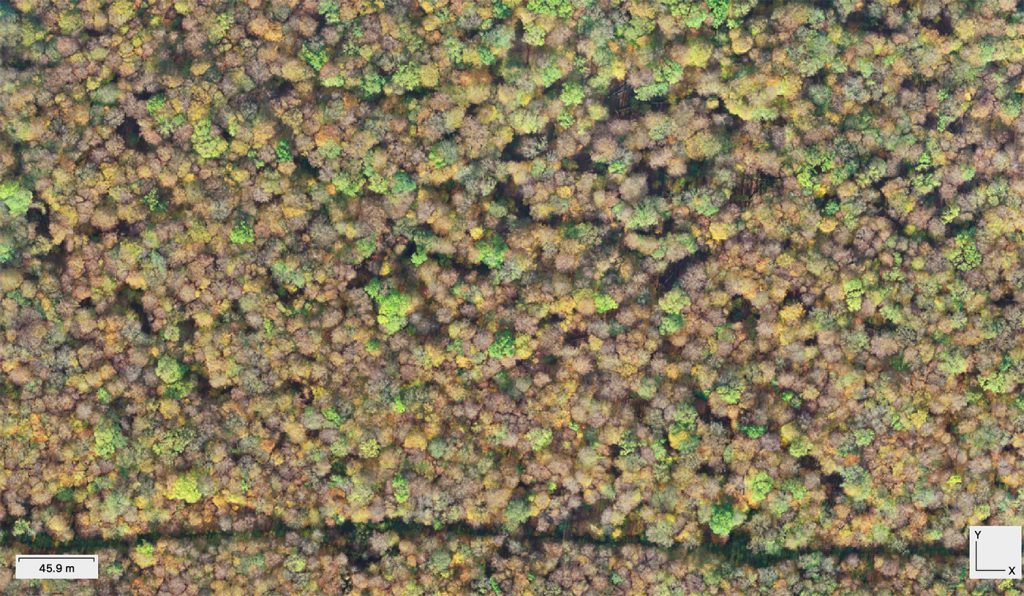
.
Planning for 2020 started. We will monitor how and where the beech trees wake up and come back in March/April/May 2020 with lots of gear and hopefully also with the P4MS that is right now in the ordering pipe.
